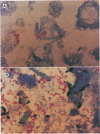Abstract
Early identification and isolation of tuberculosis patients is of utmost importance to minimize the risk of further epidemic spread of the disease. The traditional concentrated acid-fast smears are not very reliable tools for the presumptive diagnosis of tuberculosis. Acid-fast bacillus (AFB) smears from 120 patients specimens and 80 simulated AFB samples were processed according to standard laboratory procedures and by cytocentrifugation (Cyto-Tek, Ames Division, Miles Laboratories, Inc., Elkhart, Ind.). Prior to dispensing of samples into the Cyto-Tek chambers, specimens were liquefied and decontaminated by mixture with an equal volume of 5% sodium hypochlorite (household bleach). Culture and smear results were correlated. Of 120 patient specimens, 43 were culture and smear negative by both methods. Ten specimens were overgrown with mold and bacteria, but 2 of them had positive AFB smears by cytocentrifugation only. There were 67 positive AFB cultures, with 67 positive cytocentrifuge smears and 34 positive smears by the conventional technique. Of the 80 simulated positive AFB samples, all grew mycobacteria on culture. Smears from the 10(5)- to 10(3)-CFU/ml specimens were positive by both methods. The simulated samples with 10(2) CFU/ml yielded smears positive only by cytocentrifugation. The Cyto-Tek AFB smears had a greater correlation with positive culture than did the smears from concentrated specimens. The sensitivity, efficiency, and rapidly of the Cyto-Tek AFB smear technique resulted in increased detection of mycobacteria in clinical specimens. The simplicity and safety of this method will enable qualified mycobacteriology technologists to rapidly and accurately perform sputum smears for AFB at clinics, emergency rooms, and field sites, as well as in the traditional laboratory setting.
Full text
PDF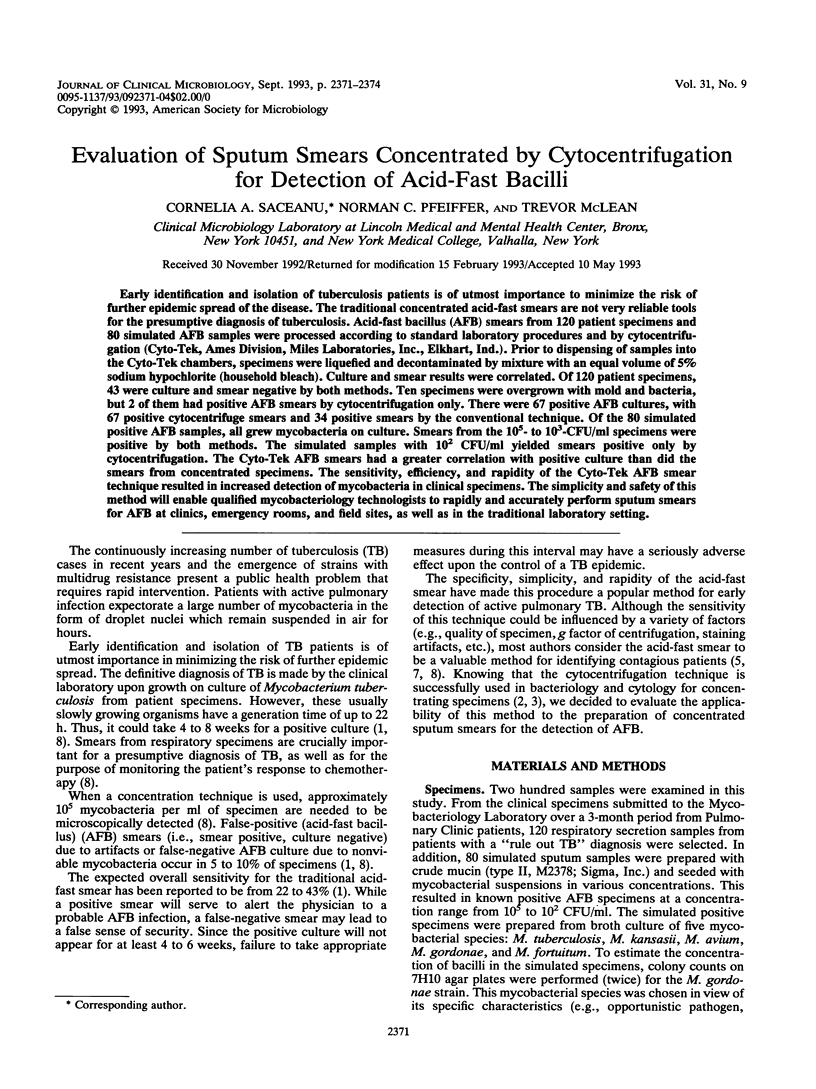
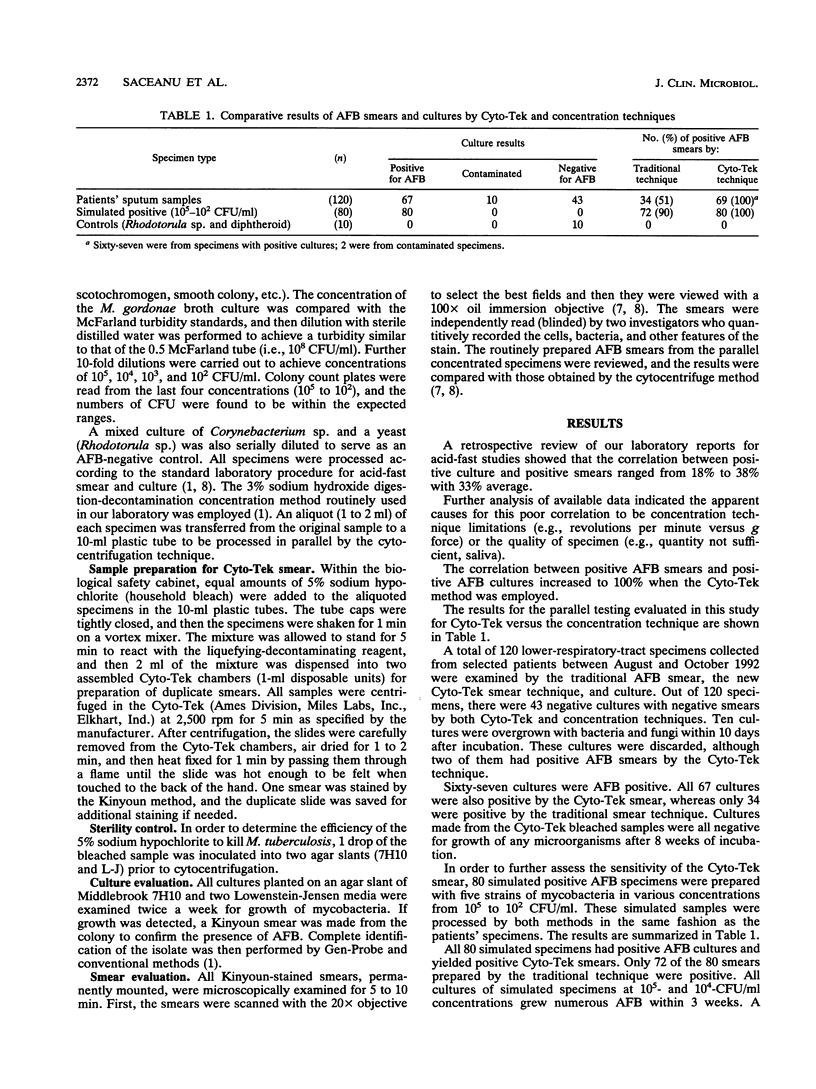
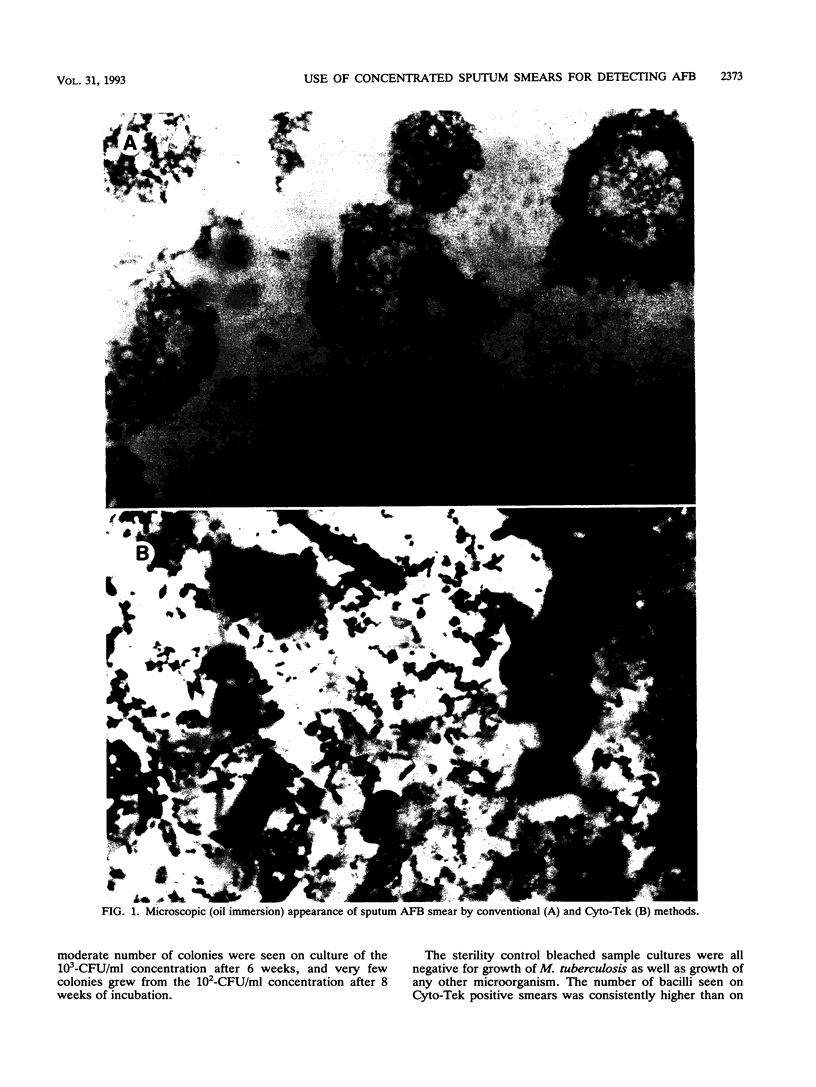
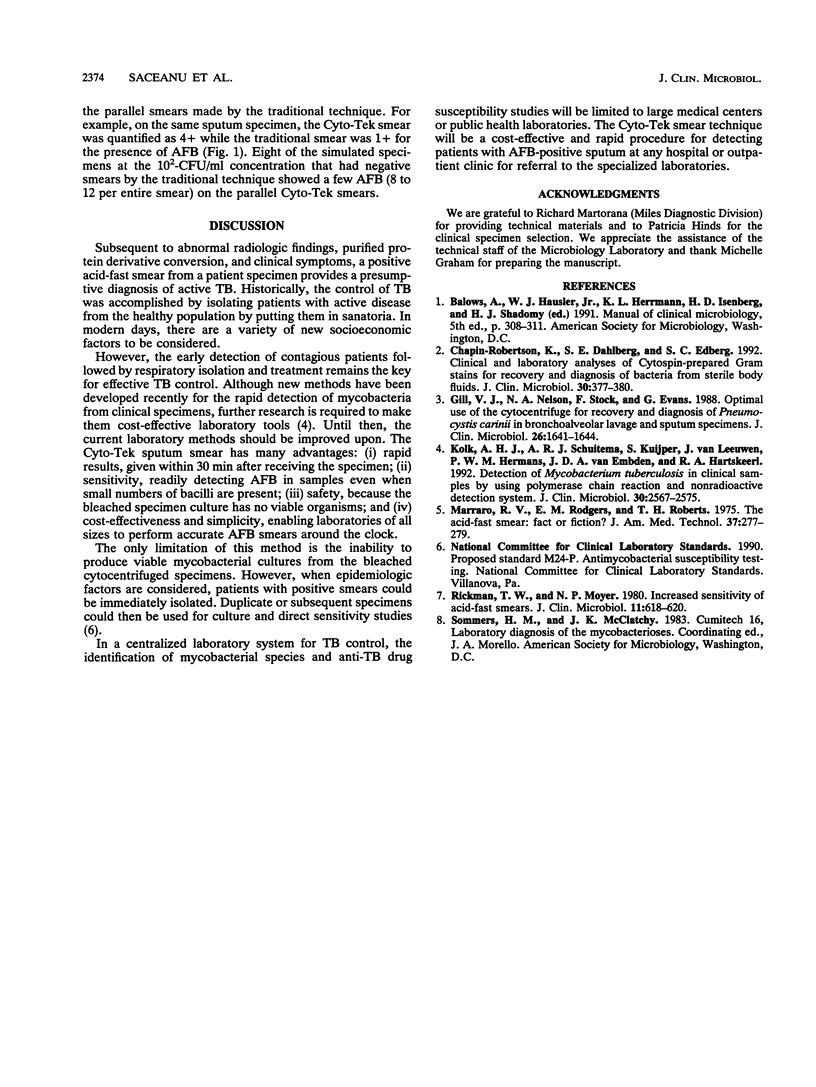
Images in this article
Selected References
These references are in PubMed. This may not be the complete list of references from this article.
- Chapin-Robertson K., Dahlberg S. E., Edberg S. C. Clinical and laboratory analyses of cytospin-prepared Gram stains for recovery and diagnosis of bacteria from sterile body fluids. J Clin Microbiol. 1992 Feb;30(2):377–380. doi: 10.1128/jcm.30.2.377-380.1992. [DOI] [PMC free article] [PubMed] [Google Scholar]
- Gill V. J., Nelson N. A., Stock F., Evans G. Optimal use of the cytocentrifuge for recovery and diagnosis of Pneumocystis carinii in bronchoalveolar lavage and sputum specimens. J Clin Microbiol. 1988 Sep;26(9):1641–1644. doi: 10.1128/jcm.26.9.1641-1644.1988. [DOI] [PMC free article] [PubMed] [Google Scholar]
- Kolk A. H., Schuitema A. R., Kuijper S., van Leeuwen J., Hermans P. W., van Embden J. D., Hartskeerl R. A. Detection of Mycobacterium tuberculosis in clinical samples by using polymerase chain reaction and a nonradioactive detection system. J Clin Microbiol. 1992 Oct;30(10):2567–2575. doi: 10.1128/jcm.30.10.2567-2575.1992. [DOI] [PMC free article] [PubMed] [Google Scholar]
- Rickman T. W., Moyer N. P. Increased sensitivity of acid-fast smears. J Clin Microbiol. 1980 Jun;11(6):618–620. doi: 10.1128/jcm.11.6.618-620.1980. [DOI] [PMC free article] [PubMed] [Google Scholar]



